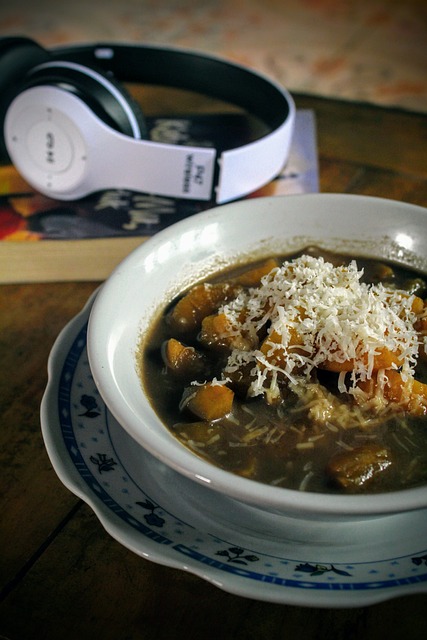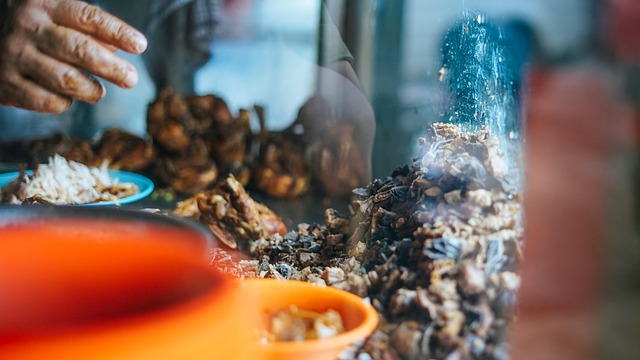A Taste of Makassar’s Heritage
Coto Makassar is more than just a dish; it is the fragrant embodiment of South Sulawesi’s culinary soul. This robust beef soup, infused with a medley of spices and ground peanuts, has nourished generations, weaving its way into the cultural and emotional fabric of Makassar. With each spoonful, it tells a story — of tradition, craftsmanship, and the enduring warmth of community.
The Origins of Coto Makassar
The historical roots of Coto in the Bugis-Makassar kingdom
Centuries ago, when the Bugis and Makassar kingdoms flourished as maritime powers, royal cooks crafted Coto as a dish worthy of nobles. It was once prepared exclusively for the sultans and warriors, symbolizing strength and prestige. The blend of beef, offal, and nut-based broth was a reflection of abundance and respect for every part of the animal.
How royal kitchens shaped the evolution of this dish
The royal kitchens were laboratories of flavor, where cooks experimented with local herbs and spices brought by seafarers from India, Arabia, and China. Over time, these exotic influences melded with indigenous ingredients, creating the signature complexity that defines Coto today.
From palace delicacy to street-side favorite
When the monarchy’s walls opened to common folk, Coto followed. What began as an aristocratic indulgence became a beloved street food, served from smoky stalls at dawn and dusk. Its democratization marked the transformation of a regal recipe into a culinary emblem of the people.
A Symbol of Community and Tradition
The cultural importance of Coto in social gatherings
Coto is more than sustenance — it’s a gesture of togetherness. In Makassar, it is often shared during weddings, religious festivals, and family reunions. The communal act of dining around steaming bowls fosters connection and conversation.
How Coto represents unity and hospitality in Makassar
For the Makassarese, serving Coto is an expression of sincerity and hospitality. To offer someone a bowl is to welcome them into one’s home, one’s life. It’s a ritual of generosity that transcends class and status.
Festive occasions where Coto takes center stage
During celebrations like Idul Fitri or local harvest festivals, enormous pots of Coto simmer for hours, feeding guests and neighbors alike. It’s a feast of flavor and fellowship — a culinary heartbeat pulsing through every joyous occasion.
Unraveling the Essence of Coto
The meaning behind the name “Coto”
The term “Coto” is believed to derive from an old Bugis word referring to a concoction or blend — an apt name for a dish built on harmony and fusion.
How Coto differs from other Indonesian soups

Photo by Pixabay / Free to use under license.
Unlike Soto or Sayur, Coto’s depth lies in its peanut base and slow-cooked beef organs. It is richer, darker, and more velvety — a soup that feels almost like a stew, with an intensity that lingers on the palate.
Why it’s considered a culinary icon of Sulawesi
Coto’s enduring popularity has made it synonymous with Makassar itself. It encapsulates the city’s maritime spirit — bold, layered, and unapologetically robust.
The Ingredients That Define Authenticity
The choice of beef and innards — a nod to Makassar tradition
Traditional Coto uses not just beef but also liver, tripe, and heart — a reflection of the Makassarese ethos of resourcefulness and respect for every part of the animal.
The powerful role of spices and nuts in flavor building
Ground peanuts serve as the heart of the broth, lending it creaminess and depth. Spices such as coriander, cumin, and candlenut enhance its nutty base, resulting in a flavor that is both earthy and aromatic.
Lemongrass, galangal, and bay leaves — the aromatic foundation
These tropical aromatics add a bright, herbaceous note that lifts the heavy richness of the broth. Their scent alone is enough to evoke memories of bustling Makassar kitchens.
The Magic of Burasa: Coto’s Faithful Companion
What is Burasa and how it complements Coto
Burasa — a compact rice cake infused with coconut milk — is Coto’s inseparable companion. Its subtle sweetness and creamy texture temper the soup’s spiciness, creating balance in every bite.
The process of making Burasa with coconut milk and banana leaves
Prepared by steaming rice in banana leaves with rich coconut milk, Burasa embodies the patience and artistry of Makassar cooking. The wrapping seals in fragrance, ensuring a soft yet structured texture.
Other regional pairings that enhance the Coto experience
While Burasa reigns supreme, some enjoy Coto with ketupat or plain steamed rice. Each pairing adds a new rhythm to the symphony of textures.
The Art of Preparation
Slow-cooking secrets that bring out rich, earthy flavors
Coto’s magic lies in time. The beef is simmered for hours, allowing collagen to melt and flavors to deepen until the broth becomes almost silky.
How roasting and grinding spices elevate the broth
Before they meet the pot, spices are toasted until aromatic, then pounded into a fine paste. This age-old ritual coaxes out oils and nuances hidden within each seed.
Traditional clay pots versus modern cooking methods
In the old days, Coto simmered in earthen pots over wood fires, imparting a faint smokiness. Today, pressure cookers may replace clay, but the soul of the dish remains unchanged.
The Distinctive Flavors of Coto Broth
The nutty and savory blend that defines Makassar cuisine
The fusion of beef essence and roasted peanuts yields a broth that’s both velvety and bold — a sensory experience unmatched by any other Indonesian soup.
How peanuts and spices create a silky texture
The emulsified peanuts act as a natural thickener, binding flavors together while giving the soup its iconic brown hue and satiny consistency.
Why the broth’s thickness varies across vendors
Each Coto stall has its own secret ratio of peanuts to broth. Some prefer a lighter texture for morning meals, while others embrace a thicker, stew-like form for heartier appetites.
Regional Variations Across Sulawesi

Photo by Pixabay / Free to use under license.
Differences between Coto Makassar, Pallubasa, and Sop Saudara
Pallubasa is richer and thicker, often topped with raw egg yolk, while Sop Saudara carries a more peppery kick. Coto remains the most balanced — refined, yet powerful.
How neighboring towns reinterpret the classic recipe
From Gowa to Maros, each region tweaks the spice blend or meat cuts, proving that culinary evolution is both inevitable and celebrated.
Modern fusion twists found in urban eateries
Contemporary chefs have reimagined Coto as sliders, noodles, or even risotto, marrying tradition with innovation. Yet, the soul of Makassar still shines through.
Coto Makassar in Contemporary Dining
The rise of Coto in Indonesian culinary tourism
Travelers seeking authenticity often start their Sulawesi food trail with a bowl of Coto. It’s become an edible landmark — one that defines Makassar’s cultural map.
How restaurants preserve authenticity while adapting to trends
Modern establishments may refine presentation, but they remain loyal to the essence: robust broth, tender beef, and the unmistakable scent of roasted nuts.
Signature Makassar eateries where Coto reigns supreme
Historic spots like Coto Nusantara or Coto Paraikatte serve generations-old recipes, each preserving the spirit of Makassar’s culinary lineage.
Street Food Culture and Everyday Comfort
Morning markets and late-night stalls serving Coto
In Makassar, Coto transcends time. Early risers and night owls alike gather around steaming pots, savoring warmth with every spoonful.
Why locals see it as both breakfast and supper
Coto adapts to every hour and mood — invigorating at dawn, comforting at dusk. It’s the city’s answer to both hunger and nostalgia.
The humble vendors who keep tradition alive
Behind every pot stands a vendor guarding generations of culinary wisdom, their hands seasoned by years of stirring and tasting.
Spice, Texture, and Balance
The subtle interplay between broth, meat, and garnish
Every bowl of Coto is a study in contrast — tender beef, crunchy shallots, and silky broth in perfect synchrony.
The garnish ritual — green onions, fried shallots, and lime
Before serving, each bowl is crowned with vibrant garnishes that add brightness and crunch. A squeeze of lime cuts through the richness, awakening the senses.
How the spice balance differs from Western soups
Unlike the creamy monotony of Western stews, Coto thrives on complexity — spicy, nutty, and savory layers that evolve with each bite.
Coto as a Culinary Experience
The tactile pleasure of dipping Burasa in hot broth
The act of dipping Burasa is a sensory dance — the rice cake soaks up the broth, transforming into a vessel of flavor.
How aroma and heat awaken the senses
The fragrance of lemongrass and roasted peanuts, mingled with steam, evokes comfort and memory. One breath and you’re transported to a bustling Makassar street.
Why eating Coto is considered a ritual, not just a meal
It’s a slow affair, savored in silence or conversation. Each bite is an homage to heritage, patience, and craftsmanship.
Nutritional Value and Health Aspects
The protein richness of slow-cooked beef and organs
Packed with protein and minerals, Coto provides strength and vitality — a meal designed for endurance and sustenance.
How peanuts contribute beneficial fats and energy
The inclusion of peanuts offers heart-healthy fats and a natural energy boost, grounding the dish in wholesome indulgence.
Balancing indulgence with mindful consumption
Though rich, moderation ensures one can savor Coto’s decadence without excess — a lesson in balance and appreciation.
Coto in the Eyes of Travelers
Why tourists seek out authentic Coto in Makassar
For many, Coto represents the essence of local authenticity — unpretentious yet profoundly flavorful.
Travel routes and markets where the best Coto is found
Visitors flock to traditional markets and roadside stalls, where the scent of simmering broth acts as a beacon of invitation.
Stories of first encounters with this legendary dish
First-timers often describe an awakening — the surprise of texture, the comfort of warmth, and the lingering taste of history.
Homemade Coto: Bringing Makassar to Your Kitchen
Essential ingredients for a home-cooked version
Beef brisket, peanuts, galangal, lemongrass, and tamarind — the pillars of flavor that form Coto’s signature profile.
Tips for achieving the authentic flavor without traditional tools
Patience is key; slow simmering is non-negotiable. A heavy pot and fresh spices can replicate the depth once achieved by clay.
Common mistakes to avoid when preparing Coto
Avoid over-roasting the peanuts or boiling the broth too quickly; both can disrupt the delicate balance of richness and aroma.
Cultural Preservation and Culinary Pride
How Makassar communities pass recipes through generations
Mothers teach daughters, fathers mentor sons — oral tradition ensures Coto’s legacy lives on, one family at a time.
Efforts to document and protect Coto’s culinary heritage
Local organizations and chefs have begun cataloging recipes to safeguard authenticity against the tide of modernization.
The role of food festivals in keeping the dish relevant
Events like the Makassar Culinary Festival celebrate Coto not as relic but as a living, evolving heritage.
Comparing Coto with Global Counterparts
Parallels with other nut-based soups around the world
From African groundnut stews to Thai satay broths, Coto shares a global lineage of nut-infused comfort foods.
How Coto stands apart in depth and cultural meaning
Yet none possess its unique fusion of maritime spice, ritual significance, and soulful simplicity.
What global chefs can learn from its preparation methods
Patience, respect for ingredients, and the mastery of time — principles that transcend borders and define great cooking.
Coto in Modern Media and Pop Culture
Appearances in television and travel documentaries
Coto has been spotlighted by culinary explorers who marvel at its complexity and cultural symbolism.
The growing online fandom for Coto recipes
Food bloggers and vloggers alike share their versions, spreading the warmth of Makassar’s kitchens to global audiences.
How influencers and chefs spotlight this iconic soup
Renowned chefs reinterpret Coto in haute cuisine, proving that heritage can coexist beautifully with innovation.
Conclusion: A Bowl That Tells a Story
Coto Makassar is not merely food-it is a vessel of memory, identity, and pride. Its aroma evokes history; its taste speaks of belonging. Through every simmer and stir, generations have preserved a legacy that unites Makassar’s people. One bowl at a time, Coto continues to nourish the body and soul timeless, hearty, and undeniably Indonesian.




